
Gjirokastër, known as the “City of Stone,” is one of Albania’s most captivating destinations. A UNESCO World Heritage Site, this hilltop town is famous for its well-preserved Ottoman-era architecture, cobblestone streets, and rich history. Whether you’re exploring the imposing Gjirokastër Castle, wandering through the bazaar, or learning about local history in the Ethnographic Museum, Gjirokastër offers a unique and authentic experience. But with so many charming towns in Albania, you might wonder: is Gjirokastër worth visiting? In this post, we’ll uncover what makes Gjirokastër special and help you decide if it’s the right destination for your trip.
Table of Contents
Pros – Reasons You Should Visit Gjirokastër
1. A Beautifully Preserved Ottoman-Era Old Town
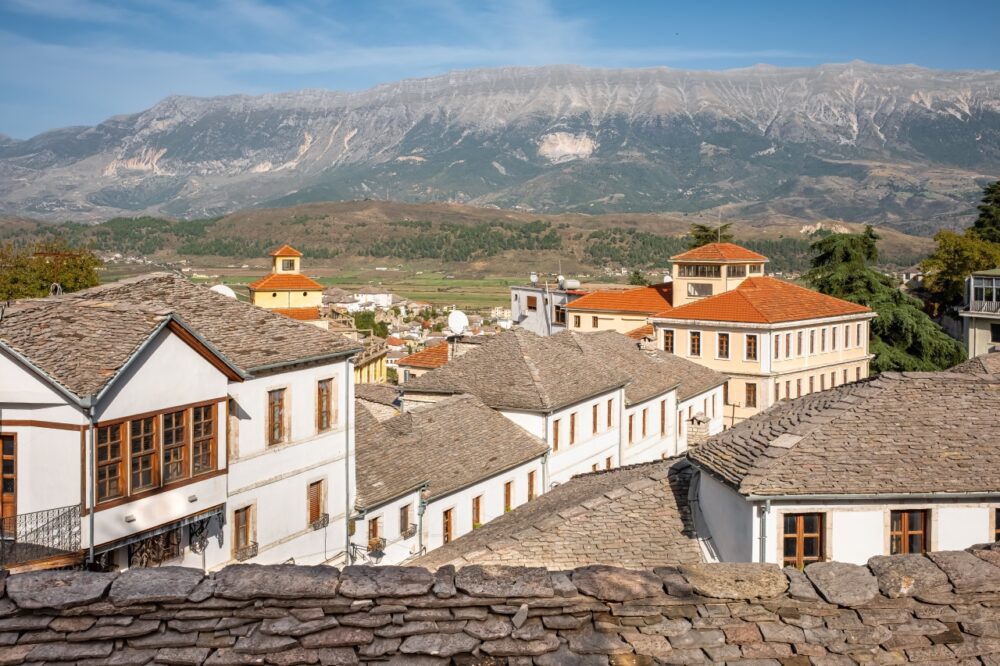
Gjirokastër is one of the best-preserved Ottoman-era cities in the Balkans, earning it a place on the UNESCO World Heritage list. Its stone-built houses, narrow cobbled streets, and traditional architecture make it feel like a living museum. Unlike some historic towns that have lost their authenticity due to modern development, Gjirokastër retains its old-world charm and offers a glimpse into Albania’s past.
Walking through the Old Town, I was mesmerized by the unique stone-roofed houses, many of which date back centuries. Every turn led to another beautiful viewpoint, a hidden alley, or a charming courtyard filled with colorful flowers. The best part was that, unlike more touristy old towns in Europe, Gjirokastër still feels like a place where people live and work rather than just a preserved attraction.
2. Gjirokastër Castle Offers Incredible Views and History
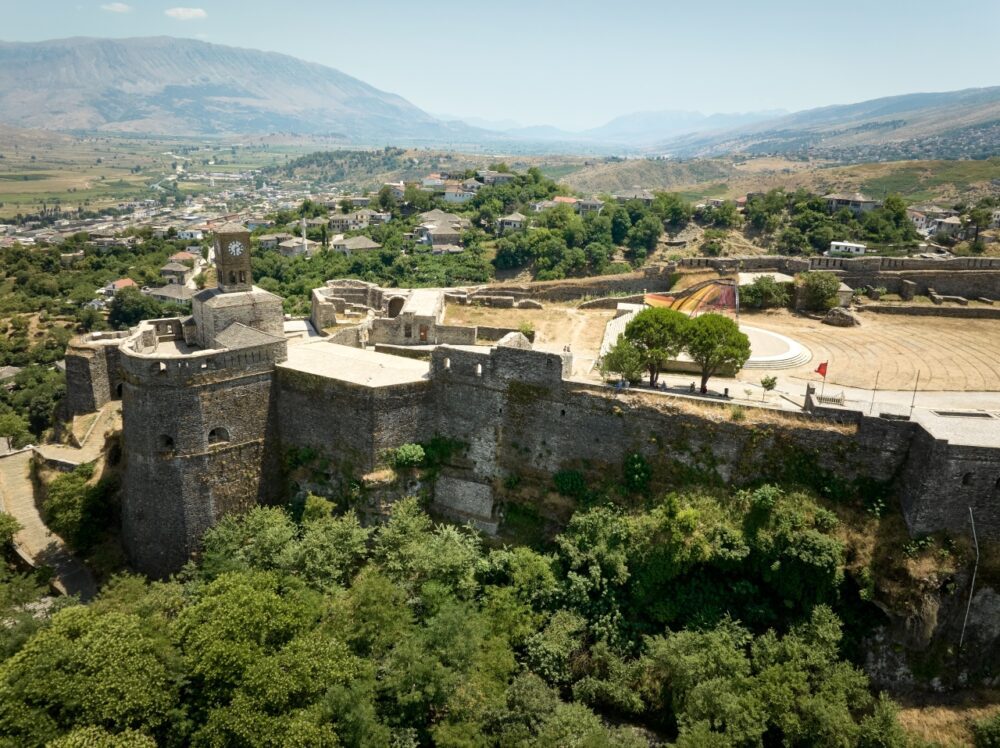
Dominating the skyline of the city, Gjirokastër Castle is one of the largest and most impressive castles in Albania. Perched on a hill overlooking the town, it offers breathtaking panoramic views of the surrounding Drino Valley and mountains. Inside, visitors can explore its historic tunnels, old prison cells, and an underground weapons museum that showcases Albania’s military history.
Standing on the castle walls, I could see the entire town spread out below me, with its stone rooftops blending into the rugged landscape. The atmosphere inside the castle was fascinating, with a mix of legends, war relics, and eerie corridors that once held prisoners. It’s not just a beautiful landmark—it’s a place where history comes to life.
3. The City’s Unique “Stone City” Architecture
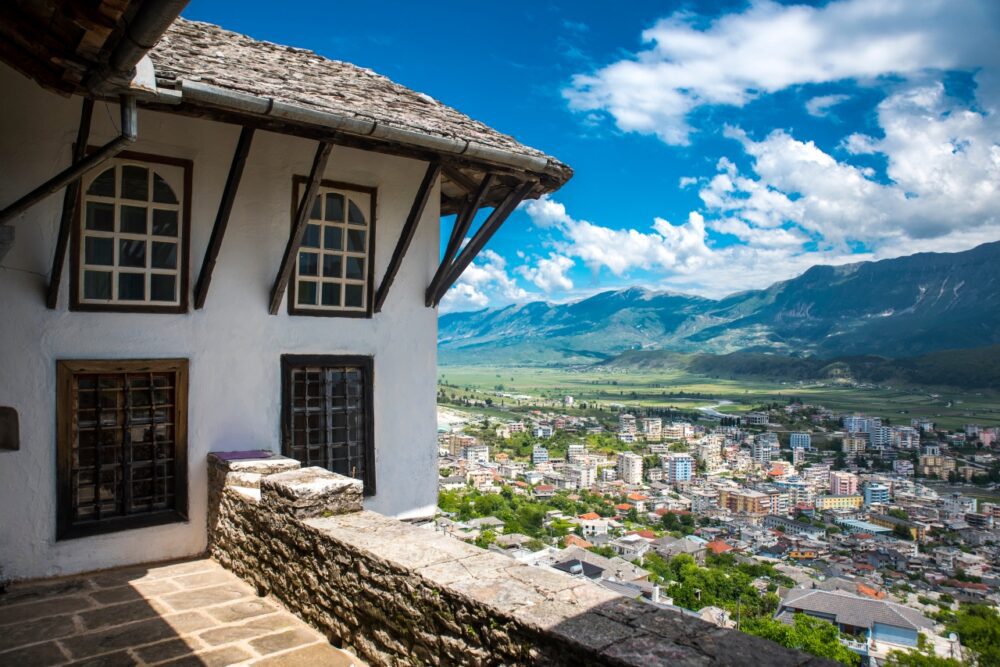
Gjirokastër is often called the “City of Stone” because of its distinctive architecture. The traditional houses, known as kullas, are built entirely from stone, with thick walls, fortress-like towers, and dark wooden interiors. Many of these houses date back to the Ottoman era and have been carefully restored to preserve their unique style.
I had the chance to visit one of these historic homes, the Zekate House, which is open to visitors. Walking through its large wooden doors, I felt like I had stepped back in time. The richly decorated rooms, carved ceilings, and sweeping balcony views gave me a real sense of how wealthy families lived centuries ago. Exploring these homes was one of the highlights of my trip.
4. A Rich Cultural and Literary Heritage
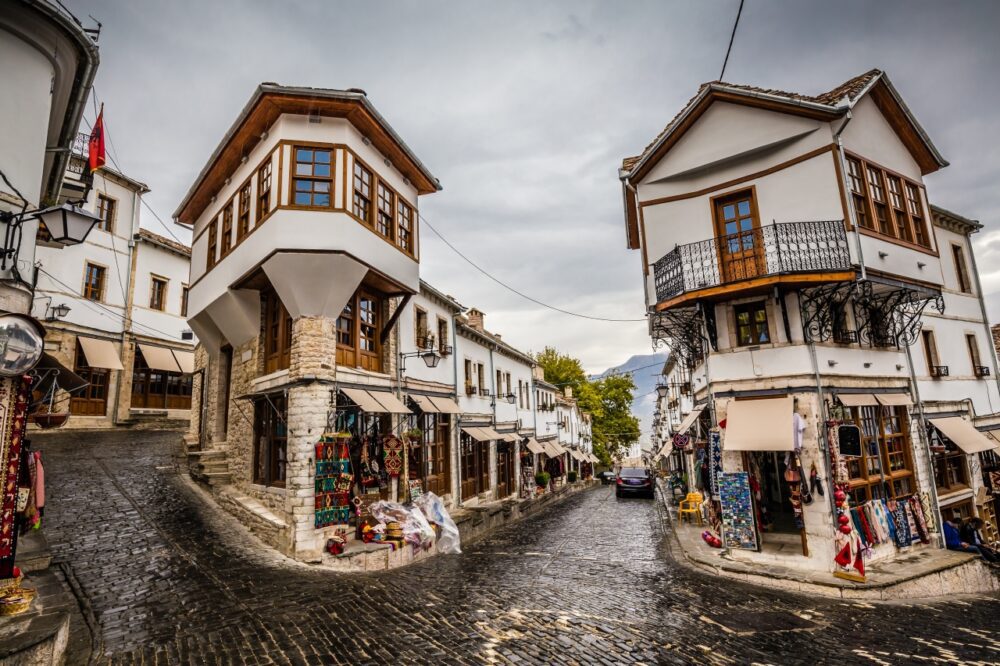
Gjirokastër is the birthplace of one of Albania’s most famous writers, Ismail Kadare, whose books have been translated into multiple languages. His home, now a museum, offers insight into both his life and the city’s cultural identity. The town has long been a center for literature, folklore, and artistic traditions, making it an interesting destination for those who love history and culture.
Visiting Kadare’s house was fascinating, especially since his works, like Chronicle in Stone, describe life in Gjirokastër during World War II. Seeing the rooms where he grew up and the bookshelves filled with Albanian and international literature gave me a deeper appreciation for the city’s literary legacy. If you’re interested in history and storytelling, Gjirokastër has plenty to offer.
5. Authentic and Delicious Traditional Food
Albanian cuisine is full of rich, hearty dishes, and Gjirokastër is one of the best places to experience traditional southern Albanian flavors. The town is known for its unique local dishes, including pasha qofte (a delicious meatball soup), qifqi (rice balls with herbs and egg), and oshaf (a traditional dessert made with dried figs and sheep’s milk).
I tried qifqi at a small family-run restaurant, and it was unlike anything I had tasted before—crispy on the outside, soft and flavorful on the inside. The best part was that meals in Gjirokastër were incredibly affordable compared to other European destinations, making it easy to enjoy high-quality food without spending too much.
6. A Fascinating Cold War Bunker Beneath the City
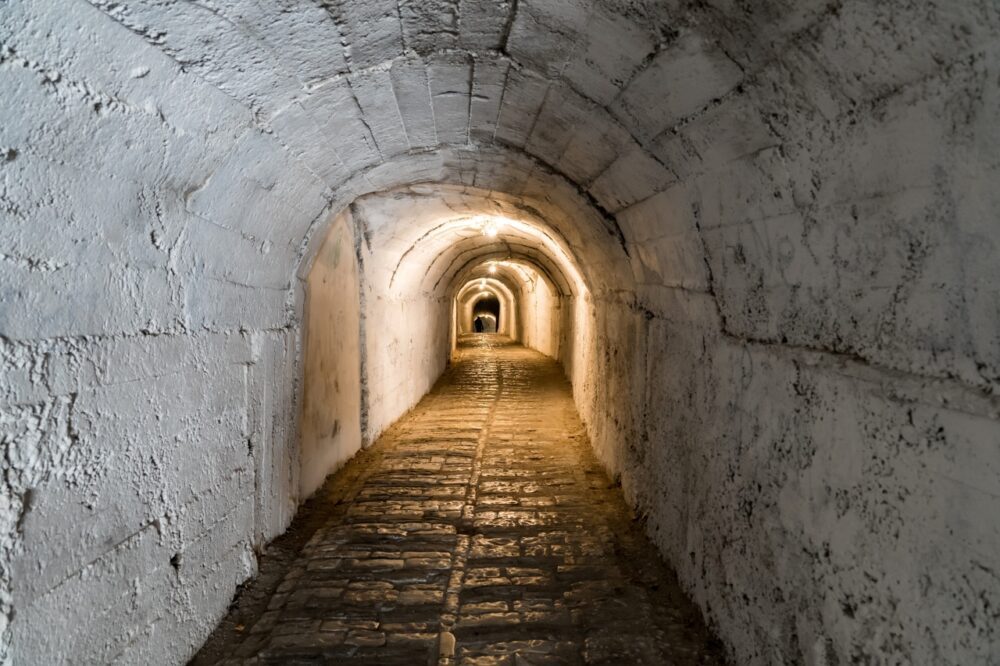
During the communist era, Albania was known for its paranoia about foreign invasions, leading to the construction of thousands of bunkers across the country. One of the most impressive is the Cold War Tunnel in Gjirokastër, a massive underground bunker built under the castle to protect political elites in case of attack.
Walking through the dimly lit tunnels, I got a real sense of the fear and secrecy that defined Albania during Enver Hoxha’s rule. The bunker, hidden for decades, has now been opened to visitors, providing a chilling but fascinating look at the country’s communist past. If you’re interested in Cold War history, this site is a must-see.
7. A More Affordable and Less Touristy Alternative to Berat
Berat, Albania’s other UNESCO-listed “city of a thousand windows,” is often the more well-known tourist destination, but Gjirokastër offers a similar historic charm with fewer crowds and lower prices. Accommodation, food, and entrance fees to attractions are all very affordable compared to other European heritage sites, making it an excellent choice for budget travelers.
I stayed in a charming guesthouse in a beautifully restored Ottoman home for a fraction of what I would have paid in Western Europe. The restaurants served generous portions at reasonable prices, and I rarely had to wait in long lines at major attractions. If you’re looking for an authentic and budget-friendly historic town, Gjirokastër is an ideal choice.
8. The Annual Gjirokastër Folk Festival
Every five years, Gjirokastër hosts Albania’s most important cultural event, the National Folklore Festival, held within the walls of the castle. This festival brings together traditional musicians, dancers, and performers from all over the country, celebrating Albania’s rich cultural heritage.
Even though I visited outside of festival time, I still got a taste of local music and dance in the main square, where musicians occasionally performed traditional songs. If you’re lucky enough to visit during the festival, you’ll experience a side of Albania that few tourists get to see, with vibrant costumes, folk instruments, and centuries-old traditions coming to life.
9. Stunning Natural Scenery and Outdoor Activities
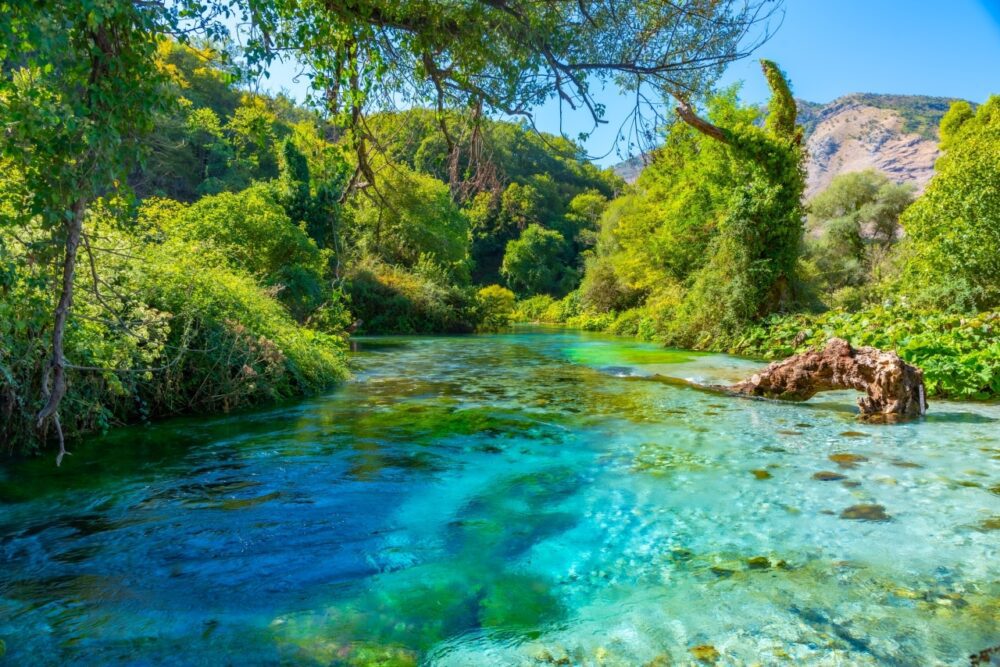
Surrounded by mountains and valleys, Gjirokastër offers plenty of opportunities for nature lovers. Hiking trails lead to scenic viewpoints, and nearby natural wonders like the Blue Eye Spring provide the perfect escape for those looking to explore Albania’s untouched landscapes.
I took a short trip to the Blue Eye (Syri i Kaltër), a stunning natural spring with unbelievably clear blue water. The hike through the forest was peaceful, and once I arrived, I was amazed by the intensity of the colors—it looked like something from a fantasy novel. Whether you enjoy hiking, photography, or just being in nature, Gjirokastër’s surroundings are breathtaking.
10. A Warm and Welcoming Local Atmosphere
One of the things that made my visit to Gjirokastër so special was the warmth of the locals. Albanians are known for their hospitality, and in this smaller town, the friendliness felt even more genuine. Whether it was guesthouse owners offering homemade raki or shopkeepers taking the time to chat about local history, I always felt welcomed.
One evening, a restaurant owner invited me to try a homemade dessert he had just made, refusing to take any payment for it. Moments like these made Gjirokastër feel like more than just a place to visit—it felt like a place to connect with people and experience true Albanian hospitality.
Cons – Things to Consider When Visiting Gjirokastër
1. Steep and Slippery Streets Can Be Challenging to Walk On
Gjirokastër’s charm comes from its well-preserved Ottoman-era architecture, but the same features that make it beautiful can also make it difficult to navigate. The city is built on a steep hillside, and its cobbled streets, while picturesque, can be slippery, especially after rain. Walking uphill for long periods can be tiring, and the uneven surfaces make it tricky for people with mobility issues.
I found myself stopping frequently to catch my breath while climbing to the castle, and even though I was wearing comfortable shoes, I had to be careful on the smooth stone streets. If you’re planning to explore Gjirokastër on foot, wearing sturdy shoes with good grip is essential. Elderly visitors or those with knee problems may find the steep paths challenging, especially in hot weather.
2. Limited Public Transport and Accessibility Issues
Gjirokastër is not the easiest place to reach, especially for those relying on public transport. While there are buses from major cities like Tirana and Sarandë, the schedules can be infrequent, and the journey can take longer than expected due to Albania’s winding mountain roads. Once you arrive, getting around the city itself is mostly done on foot, as there are few taxis and no local public transport system.
I took a bus from Sarandë, and while the scenery along the way was beautiful, the ride was bumpy and took longer than I had anticipated. Once in Gjirokastër, I realized that without a car, my only option for getting to nearby attractions like the Blue Eye Spring was hiring a taxi or arranging a private tour. If you’re someone who prefers well-connected public transport, Gjirokastër might feel a bit inconvenient.
3. Fewer Modern Facilities and Limited Nightlife
While Gjirokastër is full of historical charm, it’s not a place for those seeking modern amenities or a vibrant nightlife scene. The town has a handful of restaurants and cafés, but after dark, it becomes very quiet, with only a few bars open late. Shopping options are also limited, and aside from small souvenir shops, you won’t find large malls or international brands.
One evening, I walked through the Old Town looking for a place to have a drink, and most businesses had already closed. Unlike larger Albanian cities like Tirana or coastal destinations like Sarandë, Gjirokastër is more about slow-paced sightseeing rather than late-night entertainment. If you’re looking for a party scene or lots of evening activities, this might not be the best destination.
4. Tourism Infrastructure is Still Developing
Although Gjirokastër has grown in popularity, its tourism infrastructure is not as developed as in other European heritage towns. While there are some excellent guesthouses and boutique hotels, the range of accommodations is still somewhat limited, particularly for luxury travelers. English is widely spoken in tourist areas, but in some smaller shops or local eateries, communication can be a challenge.
During my stay, I noticed that some attractions lacked detailed signage or explanations in multiple languages. At certain historical sites, I wished there had been more information available, as guided tours were not always easy to find. While this lack of commercialization adds to Gjirokastër’s authenticity, visitors expecting a polished, highly organized tourist experience might feel that some aspects still need improvement.
5. Hot Summers Can Be Uncomfortable for Exploring
Gjirokastër experiences hot summers, and because the city is built on a hillside, exploring during peak heat can be exhausting. The combination of steep streets, little shade in some areas, and temperatures reaching above 35°C (95°F) in July and August can make sightseeing physically demanding.
I visited in mid-July, and by midday, the heat was intense, making it difficult to fully enjoy walking around. Even climbing up to the castle, which is one of the top attractions, felt like a challenge under the blazing sun. If you’re planning a trip during the summer, starting early in the morning or later in the afternoon is a better option, and bringing plenty of water is essential. Spring and autumn are much more comfortable times to visit.
When to Visit Gjirokaster
The best times to visit Gjirokaster are spring (April to June) and autumn (September to October). During these months, the weather is mild, making it ideal for exploring the UNESCO-listed Old Town, the Gjirokaster Castle, and nearby natural wonders. Summer (July to August) can be hot, but it’s a lively time with festivals like the National Folklore Festival, held every five years. Winter (December to February) is quieter, with fewer tourists, offering a tranquil experience, though some attractions may have limited access.
How to Get to Gjirokaster
The closest major airport is Tirana International Airport Nënë Tereza (TIA), about 230 kilometres away. From Tirana, buses and minibuses (furgons) run regularly to Gjirokaster, taking around 4-5 hours. For a quicker option, private taxis or car rentals are available. If travelling from Greece, Ioannina Airport is just across the border, with direct transport connections to Gjirokaster. The town is also accessible by road from nearby cities like Saranda and Berat, making it a convenient stop on an Albanian tour.
Where to Stay in Gjirokaster
Gjirokaster offers unique accommodations, many of which reflect the city’s Ottoman heritage:
- Luxury: Old Town – Stay at Hotel Gjirokastra, a beautifully restored Ottoman-era house, or Hotel Kastro, which combines historic charm with modern comforts.
- Mid-range: Historic District or Near the Bazaar – Try Kalemi Hotel, a cosy guesthouse with stunning views, or Hotel Cajupi, offering comfort and easy access to the castle.
- Budget: Suburban Gjirokaster – Consider Stone City Hostel, popular with backpackers for its friendly atmosphere, or Guesthouse Flora, a charming and affordable option in a traditional house.
Getting Around Gjirokaster
Gjirokaster is best explored on foot, especially its steep, cobbled streets and the historic Bazaar area. The Gjirokaster Castle is a highlight, but reaching it involves a steep walk or a short taxi ride. Local minibuses (furgons) and taxis are available for trips outside the city or to nearby villages. While cycling isn’t common due to the hilly terrain, walking is the best way to immerse yourself in the city’s atmosphere. If you’re staying in the Old Town, most attractions are within a short distance.
How Long to Spend in Gjirokaster
Two days is perfect for exploring Gjirokaster’s main attractions. Spend one day visiting the Castle, the Ethnographic Museum (housed in the former home of dictator Enver Hoxha), and wandering the Bazaar. Dedicate another day to exploring nearby highlights like the Blue Eye Spring or hiking in the Drino Valley. With more time, visit local villages or enjoy traditional Albanian cuisine in a family-run guesthouse. Gjirokaster’s mix of history, culture, and stunning landscapes makes it an unforgettable destination.
Conclusion
So, is Gjirokastër worth visiting? Absolutely! If you’re drawn to historic charm, stunning architecture, and a glimpse into Albania’s past, Gjirokastër is a must-see. Its combination of cultural landmarks, dramatic views, and a peaceful atmosphere makes it an unforgettable destination. While its steep streets might be challenging for some, the effort is more than worth it. For travellers seeking a unique and enriching experience, Gjirokastër is a gem that’s well worth exploring.
